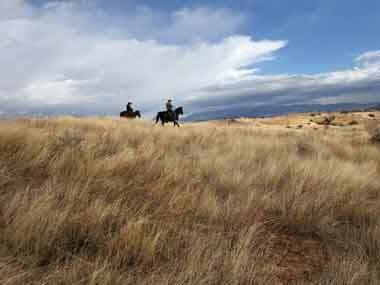Cattle ranching in South America, especially in cleared parts of the Amazon forest, ranked second with damage estimated at $353 billion, largely because of stress on water supplies and deforestation that far exceeded revenues of $16.6 billion. Coal-fired power in North America was third in the ranking on damage to “natural capital”, ahead of wheat and rice farming in Southern Asia, it said.[caption id=“attachment_699700” align=“alignleft” width=“380”] Harm to the environment? AFP[/caption] “We are trying to focus the minds of businesses and investors onto natural capital” to encourage better practices, Dorothy Maxwell, director of the TEEB for Business Coalition, told Reuters. “We are not asking anyone to close down.” Too high prices? Some experts questioned the assumptions in the report, for instance that a tonne of carbon dioxide emissions costs $106, based on data in a 2006 study of the costs climate change by former World Bank chief economist Nicholas Stern. “That’s far too high,” said Bjorn Lomborg, a Danish statistician and author of The Skeptical Environmentalist. In a European Union market, carbon emissions allowances trade for about €4.6 a tonne. “There are uncertainties,” said Alastair MacGregor, chief operating officer of British-based Trucost which did the study for TEEB. “But the scale of these impacts are so large that they would dwarf any uncertaintintes.” Even if the damage caused by cattle ranching in South America was a big over-estimate, the ranking still showed that cattle ranching in Australia and New Zealand or South East Asia was a better bet for investors, he told Reuters. Maxwell said there was a widening corporate focus on nature. Companies such as Unilever , Nestle or Pepsico, for instance, were paying more attention to agricultural supply chains. German sportswear group Puma was the first major firm to do an environmental profit and loss account, estimating it caused €145 million in damage to nature in 2010. The cost is not added to the sales price of products and is meant as a guide to consumers. Reuters
Harm to the environment? AFP[/caption] “We are trying to focus the minds of businesses and investors onto natural capital” to encourage better practices, Dorothy Maxwell, director of the TEEB for Business Coalition, told Reuters. “We are not asking anyone to close down.” Too high prices? Some experts questioned the assumptions in the report, for instance that a tonne of carbon dioxide emissions costs $106, based on data in a 2006 study of the costs climate change by former World Bank chief economist Nicholas Stern. “That’s far too high,” said Bjorn Lomborg, a Danish statistician and author of The Skeptical Environmentalist. In a European Union market, carbon emissions allowances trade for about €4.6 a tonne. “There are uncertainties,” said Alastair MacGregor, chief operating officer of British-based Trucost which did the study for TEEB. “But the scale of these impacts are so large that they would dwarf any uncertaintintes.” Even if the damage caused by cattle ranching in South America was a big over-estimate, the ranking still showed that cattle ranching in Australia and New Zealand or South East Asia was a better bet for investors, he told Reuters. Maxwell said there was a widening corporate focus on nature. Companies such as Unilever , Nestle or Pepsico, for instance, were paying more attention to agricultural supply chains. German sportswear group Puma was the first major firm to do an environmental profit and loss account, estimating it caused €145 million in damage to nature in 2010. The cost is not added to the sales price of products and is meant as a guide to consumers. Reuters
Coal and cattle lead business damage to nature: study
FP Archives
• April 15, 2013, 15:32:44 IST
Some experts questioned the assumptions in the report, for instance that a tonne of carbon dioxide emissions costs $106, based on data in a 2006 study.
Advertisement
)